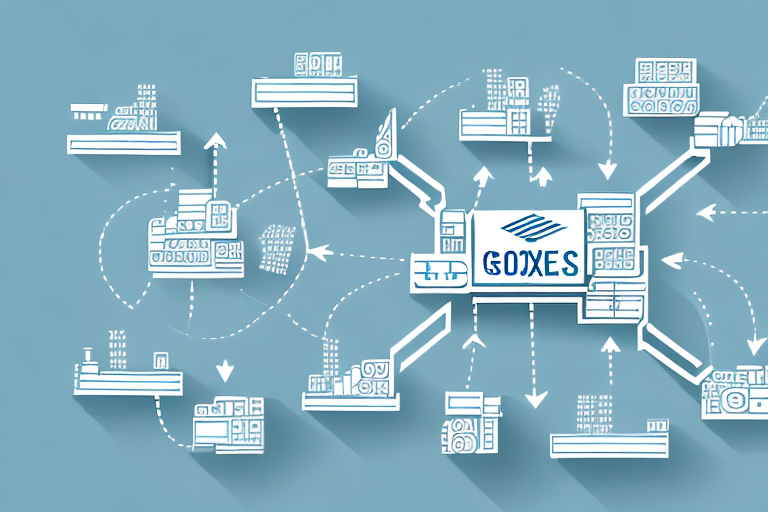Importance of KPIs in Logistics
Logistics is a critical component of any business, encompassing the movement of goods and materials from one location to another. Effective logistics operations are essential for maintaining supply chain efficiency, reducing costs, and ensuring customer satisfaction. Key Performance Indicators (KPIs) play a vital role in measuring and monitoring the performance of logistics activities, providing objective insights that help identify areas for improvement and drive strategic decision-making.
Key Performance Indicators in Logistics
There are several KPIs that logistics managers commonly use to assess the efficiency and effectiveness of their operations. These KPIs can be categorized into various aspects of logistics, including inventory management, order fulfillment, transportation, and overall supply chain performance.
Inventory Turnover
Inventory turnover measures how often inventory is sold and replaced over a specific period. A higher turnover rate indicates efficient inventory management and reduced holding costs. According to the Investopedia, improving inventory turnover can significantly enhance cash flow and reduce storage expenses.
Order Cycle Time
Order cycle time tracks the total time taken from receiving an order to its delivery to the customer. Shorter cycle times enhance customer satisfaction and increase the likelihood of repeat business. Industry benchmarks suggest that companies with optimized order cycle times can achieve up to a 20% improvement in customer satisfaction rates.
Fulfillment Accuracy
Fulfillment accuracy assesses the precision of order picking and packing processes. High accuracy rates minimize returns and enhance customer trust. According to a 2023 report by Logistics Management, companies that maintain a fulfillment accuracy rate above 99% experience significantly lower return rates.
Transportation Costs
Transportation costs encompass all expenses related to the movement of goods, including fuel, labor, and maintenance. Monitoring these costs helps identify opportunities for cost reduction and route optimization. Advances in Transport Management Systems (TMS) have enabled companies to reduce transportation costs by up to 15% through better route planning and load optimization.
Measuring and Tracking Logistics KPIs
Accurate measurement and tracking of logistics KPIs require reliable data collection methods and appropriate tools. Implementing robust systems ensures that logistics managers have access to real-time data, enabling timely decision-making and performance adjustments.
Tools for KPI Measurement
- Transport Management Systems (TMS): TMS solutions facilitate route planning, carrier selection, and freight auditing, providing comprehensive insights into transportation performance.
- Warehouse Management Systems (WMS): WMS tools track inventory levels, order processing, and warehouse operations, ensuring efficient inventory management.
- Enterprise Resource Planning (ERP) Systems: ERPs integrate various business processes, offering a unified platform for tracking logistics KPIs across different departments.
- Radio Frequency Identification (RFID) Systems: RFID technology enhances inventory accuracy and provides real-time tracking of goods throughout the supply chain.
Developing Effective Logistics KPIs
Creating effective KPIs involves aligning them with the specific objectives of the logistics operation. This process requires a clear understanding of business goals, stakeholder involvement, and the ability to measure performance accurately.
Identifying Objectives
Begin by outlining the primary goals of your logistics operations, such as reducing costs, improving delivery times, or enhancing customer satisfaction. KPIs should directly reflect these objectives to provide meaningful insights.
Stakeholder Involvement
Involving key stakeholders, including logistics managers, operations staff, and other relevant departments, ensures that the selected KPIs are relevant and actionable. Collaborative KPI development fosters a shared understanding of performance metrics and their importance.
Defining Clear and Measurable KPIs
KPIs must be specific, measurable, attainable, relevant, and time-bound (SMART). Clear definitions and consistent measurement methodologies are essential for accurate performance tracking and comparison over time.
Best Practices for KPI Management in Logistics
Implementing best practices in KPI management ensures that logistics operations are continuously improving and aligned with business objectives.
- Use Reliable Data Sources: Ensure that the data used for KPI measurement is accurate, consistent, and up-to-date.
- Establish Baselines: Determine baseline performance levels to identify improvements and set realistic targets.
- Regularly Review and Update KPIs: Periodically assess the relevance of KPIs and adjust them to reflect changing business needs and market conditions.
- Ensure Transparency and Accountability: Make KPI data accessible to relevant stakeholders and assign responsibility for tracking and achieving KPI targets.
- Incorporate Stakeholder Feedback: Continuously seek input from stakeholders to refine KPIs and improve their effectiveness.
The Role of Technology in KPI Monitoring
Technology plays a pivotal role in monitoring and reporting logistics KPIs, providing tools that enhance data collection, analysis, and visualization.
Advanced Analytics and AI
Artificial intelligence and machine learning algorithms can analyze vast amounts of logistics data, identifying patterns and predicting future trends. These technologies enable proactive decision-making and optimize logistics processes.
Data Visualization Tools
Visualization tools, such as dashboards and interactive reports, present KPI data in an accessible and comprehensible format. Effective data visualization helps stakeholders quickly grasp performance metrics and identify areas needing attention.
Emerging Technologies
Technologies like blockchain and the Internet of Things (IoT) are transforming logistics operations by enhancing transparency, security, and real-time tracking capabilities. These innovations contribute to more accurate KPI monitoring and improved supply chain resilience.
Future Trends and Challenges in Logistics KPIs
The landscape of logistics KPIs is continually evolving, driven by advancements in technology and changing market dynamics. Staying ahead of these trends is essential for maintaining competitive advantage.
Increased Automation and AI Integration
Automation and AI are set to further enhance logistics operations, enabling more sophisticated KPI tracking and predictive analytics. Companies leveraging these technologies can expect greater efficiency and responsiveness in their supply chains.
Focus on Sustainability
Environmental sustainability is becoming a key focus in logistics. Future KPIs are likely to include metrics related to carbon footprint, energy consumption, and sustainable practices, reflecting the growing importance of eco-friendly operations.
Adapting to Regulatory Changes
As regulations evolve, logistics KPIs must adapt to ensure compliance with new standards. This includes tracking metrics related to safety, security, and environmental impact to meet regulatory requirements effectively.
Conclusion
Key Performance Indicators are indispensable tools for managing and optimizing logistics operations. By selecting the right KPIs, implementing effective measurement and tracking systems, and leveraging advanced technologies, logistics managers can drive continuous improvement, enhance efficiency, and achieve strategic business goals. Staying informed about emerging trends and adapting KPIs accordingly will ensure that logistics operations remain resilient and competitive in an ever-changing market landscape.




















